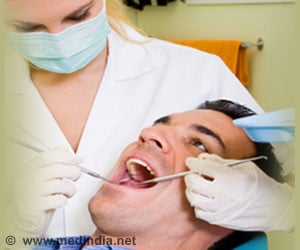A far-flung study by Atlanta -based American Cancer Society reveals that cancer patients with private insurance gets an edge over uninsured Americans.
A far-flung study by Atlanta -based American Cancer Society reveals that cancer patients with private insurance gets an edge over uninsured Americans.
The chances of early diagnosis are more with insured patients, hence, it is likely to result in long-term survival for them. On the other hand, delayed diagnoses with uninsured patients can result in the development of advanced forms of many common cancers.Serious ill effects of this gap are decades of lost life for the patients and millions of dollars of added medical care for the health system.
Over 3.5 million American adults with 12 types of cancer were subjected to study by National Cancer Database. The study, first of its kind to use national data to investigate insurance status and stage of diagnosis for a large number of cancer sites, appeared in the March issue of The Lancet, Oncology The results showed a greater correlation between the insurance status and the stage of the malignancy in the case of colon, breast and prostate cancer.
The reason is simple and apparently obvious. The symptoms of these can be detected early through routine screenings. The uninsured patients are half as likely to get mammography, colonoscopy and the like which reduced the chances of early detection.
Insurance alone is not responsible for these disparities. The study came out with so many other interesting findings too. The chances of detection as well as scope for therapies of some cancers were less in African-Americans when compared to white Americans. This not only accounts for their disproportionately high rates of being uninsured and underinsured, but also points out to lack of health awareness and insufficient supply of providers in minority communities.
Dr. Mitchell Berger, interim director of the Georgia Cancer Center for Excellence at Grady observes that despite the strong safety nets like Grady Health System in action, it is more unlikely for the poorer patients to go for an early treatment.
Advertisement
Apart from this, he says, people being in jobs that does not allow taking time off for treatments, as well as many cultural factors, pose as threats that keep them from seeking proper health care at the right time.
Advertisement
The program of community education and mammography screening established by Emory University and the Avon Foundation, Grady, from 2001 until 2007, throws lights to how education and information can act as powerful means in ensuring early diagnosis. The program could produce impressive results of early stage diagnosis. Also, the percentage of women diagnosed with late-stage breast cancer was reduced to half.
The proximity to health care and high quality care ensures better treatment. Communication and cultural barriers with patients and doctors should be dealt with effectively. A better approach to financial barriers, transportation problems of the patients and also removing some of the religious and cultural beliefs of the patients that hinder the treatment will unquestionably help to confront the deadly delays in cancer diagnosis and treatment modalities.
Source-Medindia
SUN/L










